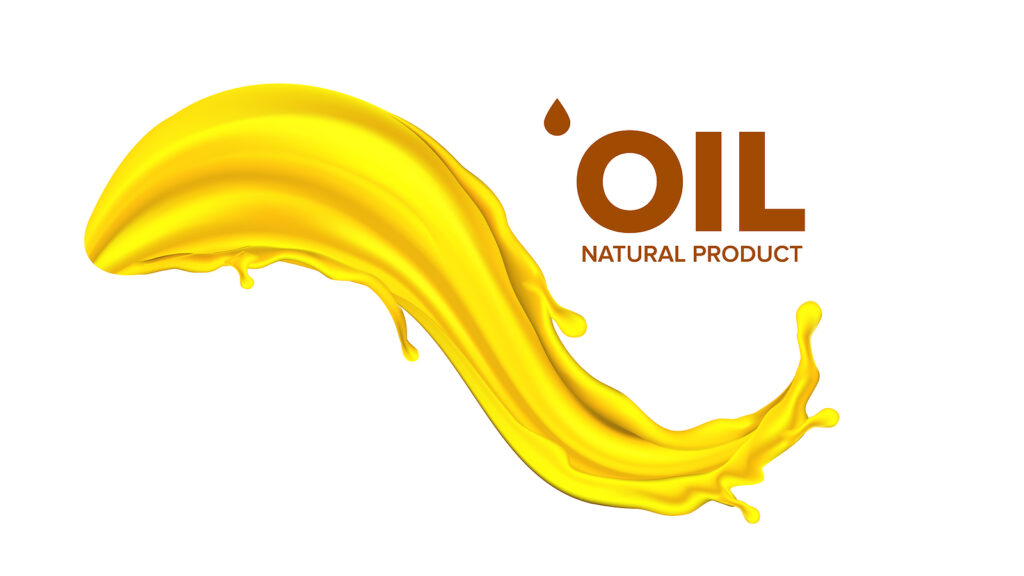Olive Oil Car Cleaner
Keeping your car's interior clean and well-maintained not only enhances its appearance but also prolongs its lifespan. When it comes to cleaning your dashboard, you might be surprised to learn that olive oil can be a natural and effective solution. In this comprehensive guide, we will explore the benefits of using olive oil as a car cleaner, provide step-by-step instructions on how to use it to clean your dashboard, and offer additional tips for maintaining a pristine car interior. Say goodbye to harsh chemicals and hello to a natural and eco-friendly way of cleaning your dashboard with olive oil!
Introduction to Using Olive Oil as a Car Cleaner
Using olive oil as a car cleaner might sound unconventional, but it has gained popularity among car enthusiasts and eco-conscious individuals for its effectiveness in cleaning and conditioning dashboards. Olive oil can help remove dust, dirt, and grime while restoring a natural shine to your dashboard, making it an excellent alternative to commercial cleaning products that often contain harsh chemicals.
Benefits of Using Olive Oil for Dashboard Cleaning
Discover the benefits of using olive oil to clean your car dashboard:
- Gentle and Natural: Olive oil is a natural ingredient that is gentle on surfaces, making it ideal for delicate materials like dashboard surfaces.
- Effective Cleaner: Olive oil's properties allow it to effectively break down and lift dirt, dust, and grime from the dashboard without causing damage.
- Restores Shine: Olive oil helps restore the natural shine of your dashboard, leaving it looking refreshed and rejuvenated.
- Conditioning Properties: Olive oil moisturizes and conditions the dashboard, preventing it from drying out and potentially cracking over time.
- Cost-Effective: Olive oil is an affordable and readily available household ingredient, making it a cost-effective solution for dashboard cleaning.

Precautions and Considerations
While olive oil can be a great option for cleaning your car dashboard, it's essential to keep the following precautions in mind:
- Avoid Excessive Application: Use a minimal amount of olive oil to prevent leaving behind an oily residue that can attract dust and grime.
- Avoid Sunlight Exposure: After applying olive oil to your dashboard, avoid exposing it to direct sunlight for extended periods as it may cause the oil to heat up and potentially damage the surface.
- Test in an Inconspicuous Area: Before applying olive oil to the entire dashboard, test it on a small, inconspicuous area to ensure it doesn't cause any adverse reactions or discoloration.
Step-by-Step Guide: How to Use Olive Oil to Clean Your Dashboard
Follow these step-by-step instructions to effectively clean your car dashboard using olive oil:
Step 1: Gather Your Supplies
- Olive oil (extra virgin or regular)
- Microfiber cloth or soft, lint-free cloth
- Soft-bristle brush or toothbrush (optional)
- Vacuum cleaner or compressed air (optional)
Step 2: Prepare Your Dashboard
- Ensure your car is parked in a shaded area or in a garage to prevent the dashboard from heating up.
- Remove any loose debris or dust from the dashboard by gently wiping it with a soft cloth or using a vacuum cleaner or compressed air.
Step 3: Apply Olive Oil
- Pour a small amount of olive oil onto a clean microfiber cloth.
- Gently rub the cloth onto the dashboard, focusing on areas with visible dirt or grime.
- Use circular motions to distribute the olive oil evenly across the dashboard surface.
- If needed, use a soft-bristle brush or toothbrush to agitate stubborn dirt or grime in hard-to-reach areas.
Step 4: Wipe Off Excess Oil
- Allow the olive oil to sit on the dashboard for a few minutes, allowing it to penetrate and lift dirt and grime.
- Using a clean microfiber cloth, wipe off any excess oil from the dashboard, ensuring a thin and even coating remains.
- Continue wiping until the dashboard feels smooth and appears shiny.
Step 5: Buff and Polish
- After removing the excess oil, use a fresh, dry microfiber cloth to buff and polish the dashboard surface.
- Buff in gentle circular motions to remove any remaining residue and enhance the shine.
- Pay attention to corners, edges, and intricate details to ensure a thorough clean and polished finish.
Step 6: Final Touches
- Inspect the dashboard for any missed spots or streaks, and reapply olive oil if necessary.
- Use a clean cloth to wipe off any excess oil, ensuring a smooth and uniform appearance.
- Allow the dashboard to air dry for a few minutes before touching or placing any items back on it.
Additional Tips for Maintaining a Clean Car Interior
To maintain a clean and pristine car interior, consider the following tips:
- Regular Dusting: Use a microfiber cloth or a soft brush to dust the dashboard and other interior surfaces regularly.
- Avoid Direct Sunlight: Park your car in shaded areas or use sunshades to minimize direct sunlight exposure to prevent heat damage and fading of dashboard surfaces.
- Clean Spills Immediately: Immediately clean up any spills or stains on the dashboard using a damp cloth to prevent them from setting and causing permanent damage.
- Vacuum Regularly: Use a vacuum cleaner or compressed air to remove dust and debris from hard-to-reach areas, such as vents, crevices, and upholstery.
- Protect with UV Shield: Consider using a dashboard protectant or UV shield to provide an additional layer of protection against sun damage and fading.

DIY Natural Dashboard Cleaner Recipes
Try out these DIY natural dashboard cleaner recipes using olive oil and other common household ingredients:
- Olive Oil and Vinegar Cleaner
- Mix equal parts of olive oil and white vinegar in a spray bottle.
- Shake well to combine the ingredients.
- Spray the mixture onto a microfiber cloth and wipe down the dashboard.
- Buff the surface with a clean cloth to remove excess oil and vinegar.
- Olive Oil and Lemon Juice Cleaner
- Combine 2 tablespoons of olive oil with the juice of one lemon in a small bowl.
- Stir well to blend the ingredients.
- Apply the mixture to a soft cloth and gently rub it onto the dashboard.
- Wipe off any residue with a clean cloth for a shiny finish.
- Olive Oil and Baking Soda Paste
- Create a paste by mixing 2 tablespoons of olive oil with 1 tablespoon of baking soda.
- Stir until a thick consistency is achieved.
- Apply the paste to a cloth or sponge and scrub the dashboard gently.
- Rinse the dashboard with a damp cloth and wipe dry.
Tips for Maintaining a Clean Dashboard
Follow these tips to keep your car dashboard clean and looking its best:
- Regular Dusting: Use a microfiber cloth or a soft brush to dust the dashboard regularly, removing any loose dirt or debris.
- Spot Cleaning: Attend to spills or stains immediately by blotting them with a clean cloth or using a mild cleaning solution.
- Avoid Harsh Chemicals: Opt for natural cleaning solutions like olive oil to prevent damage to the dashboard's finish.
- Protect from Sunlight: Park your car in shaded areas or use sunshades to minimize direct sunlight exposure, which can cause fading and cracking of the dashboard.
- Use Microfiber Cloths: Microfiber cloths are ideal for cleaning dashboards as they are gentle, lint-free, and effective at trapping dust and grime.

Frequently Asked Questions (FAQs) About Cleaning Car Dashboards with Olive Oil
Address common queries and concerns with these frequently asked questions:
- Can I use any type of olive oil to clean my car dashboard?
- It is recommended to use extra virgin olive oil for cleaning your car dashboard. Extra virgin olive oil is less processed and retains more of its natural properties, making it ideal for this purpose.
- Will olive oil make my dashboard greasy?
- When used in moderation and properly wiped down, olive oil should not leave a greasy residue on the dashboard. Be sure to use a minimal amount and thoroughly buff the surface to remove any excess oil.
- Can I use olive oil to clean other car interior surfaces?
- While olive oil is primarily suitable for cleaning and conditioning dashboards, it can be used on some leather or vinyl surfaces. However, it's important to exercise caution and test it in a small, inconspicuous area first to ensure it doesn't cause any adverse effects on the specific material.
- Is it safe to use olive oil on leather or vinyl dashboards?
- While olive oil can be used on some leather or vinyl dashboards, it's important to note that different materials may have different finishes or requirements. To ensure the best results, test the olive oil on a small, hidden area of the leather or vinyl before applying it to the entire dashboard.
- How often should I clean my car dashboard with olive oil?
- The frequency of cleaning your car dashboard with olive oil depends on various factors, such as your driving habits and the amount of dust and dirt accumulated. As a general guideline, aim for regular cleaning every few weeks to maintain a clean and shiny dashboard. Adjust the frequency based on the specific needs of your car's interior.
- Can I mix olive oil with other ingredients for dashboard cleaning?
- Yes, you can mix olive oil with other natural ingredients to create a homemade dashboard cleaner. Common additions include white vinegar, lemon juice, or essential oils. Experiment with different combinations and proportions to find the one that works best for you.
- Are there any alternatives to olive oil for cleaning car dashboards?
- Yes, if you don't have olive oil on hand, you can use other natural oils such as coconut oil or almond oil. These oils also provide cleaning and conditioning properties for your car dashboard.
- Can I use olive oil to clean sticky residue on my dashboard?
- Yes, olive oil can help remove sticky residue from your dashboard. Apply a small amount of olive oil to a soft cloth and gently rub the sticky area. The oil will help break down the residue, making it easier to remove. Be sure to wipe off any excess oil and clean the area with a mild detergent afterward.
- Can I use olive oil to clean other parts of my car's interior?
- While olive oil is primarily used for cleaning dashboards, it can be used on other plastic or vinyl surfaces, such as door panels or armrests. However, always test it on a small, inconspicuous area first to ensure compatibility with the specific material.
- Is olive oil safe to use on touchscreen displays or navigation systems?
- It is not recommended to use olive oil or any oil-based products on touchscreen displays or navigation systems. These sensitive electronics require specialized cleaning solutions specifically designed for electronic screens to avoid damage.
Conclusion
Using olive oil as a car cleaner can be a game-changer when it comes to maintaining a clean and shiny dashboard. Its natural properties make it a safe and effective alternative to harsh chemical cleaners. By following the step-by-step guide and taking the necessary precautions, you can achieve a beautifully cleaned and conditioned dashboard that enhances the overall aesthetic of your car's interior. Embrace the power of olive oil and enjoy a natural and eco-friendly way to keep your car dashboard looking its best!




